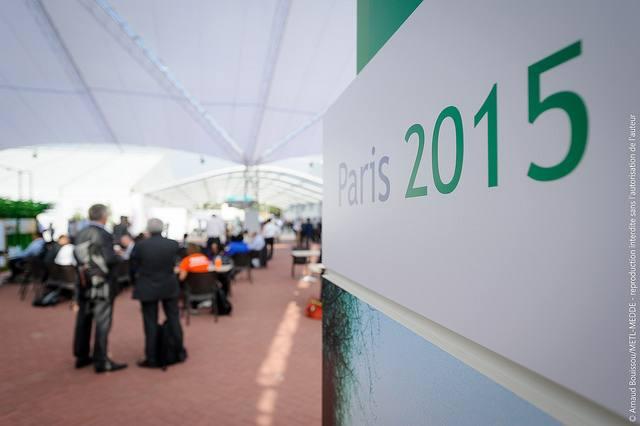
Let's be real for a second. United Nations negotiations are complex. Here in Paris, there are continuous, simultaneous meetings with delegates from dozens of countries all contributing to a draft deal that is, by the minute, getting more complex and more difficult for us, regular people, to understand. It's tough for an experienced journalist to get a grasp on, much less a layperson.
“International negotiations are incredibly opaque, incredibly difficult to understand,” said Peter Wood with the International Institute for Sustainable Development (IISD), at the Global Landscapes Forum in Paris, taking place alongside COP21. "It is really incredible how these people have managed to make something very straightforward into a completely foreign language.”
That is definitely what we're seeing right here in Paris. A new draft text agreement was just released that elicited criticism from countries including the Philippines, India and many in the Climate Vulnerable Forum (CVF), a grouping of nations that are likely to face the worst impacts of climate change. But to regular citizens, it is hard to get worked up about the fact that human rights is only mentioned in this section, or that. What difference does it make if loss and damage is included within adaptation and not as a separate section? In the end, what's a few words in a thousand-plus-page document anyway?
“Because of the language used – acronyms, different issues – [it creates] a cloak of invisibility,” Wood said. “People don't want to look at what is happening.”
The solution, Wood continued, is transparency. IISD seeks to change this by providing detailed, easily-digestible information to the public about what happens at negotiations – not only high-profile ones like the Paris climate talks, where over 3,000 are media attending. But other ones, too, where, sometimes, IISD is one of just a few civil society representatives.
Transparency is the key to not only U.N. negotiations, but also to how we fight climate as a whole. We need information about emissions – to ascertain whether or not countries are meeting their agreements. This applies to the private sector, too: At TriplePundit we often write about companies making green commitments, but if those companies are not being transparent about their operations, those commitments will, in the end, mean little. Without transparency, there cannot be accountability.
One new, powerful tool is social media. It if forcing governments to be more responsive to their situation, and, through the million-plus tweets with the hashtag #COP21 (not to mention 3p's custom COP21 hashtag, #GoParis), allowing millions to participate in the discussions taking place right here in Paris.
“It’s never been so cheap to get your message out,” Wood said. The costs for transparency are going down due to social media and mobile communication.
This, more than anything else, gives me hope that Paris will help us achieve a real agreement that can produce real change. The accountability, though, will not be up to the negotiators. It will be up to us.
Photo credit: Le Centre d'information COP21

Nithin Coca is a freelance journalist who focuses on environmental, social, and economic issues around the world, with specific expertise in Southeast Asia.














